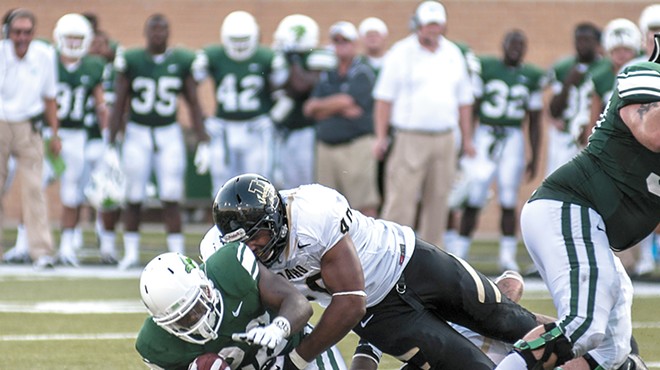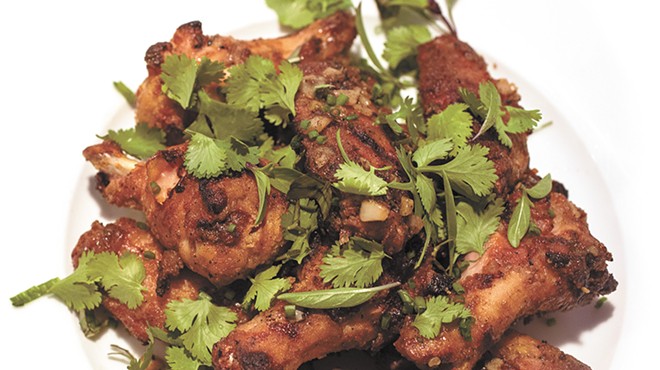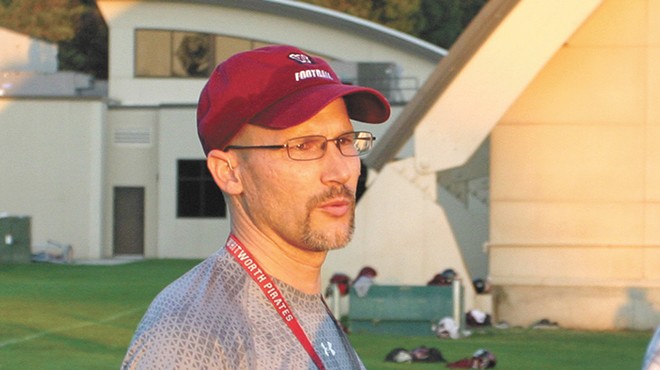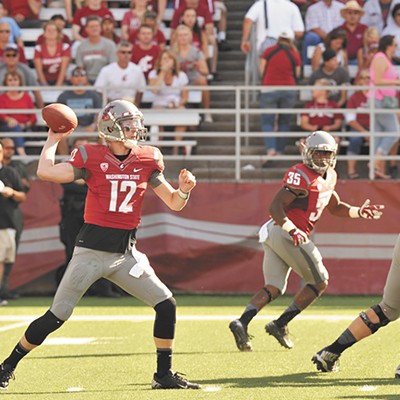— Vince Lombardi
Do you find it fun to cast your body into the air like a projectile in order to smash into the body of another person? Do you love hitting and getting hit? Are you a glutton for punishment? Do you desire to make yourself more susceptible to head injury? Do you like broken bones?
If you answered "yes" to the above questions, you might be a football player. OK, there is violence in football, and a lot of it. So why, at the pro and college level, is football the most profitable of all American sports? And why does football have the most television viewers by a wide margin over other sports?
Some would say the sport harkens back to that ancient warrior animal we call man, who survives by overcoming his enemies and by keeping his loved ones safe from outside threats. Others would say the power of football is a compensation for our own inner sense of weakness. Still others might point to football as a projection of our will to dominate the world around us.
And yet, undoubtedly for me anyway, football contains an uncommon balance of elegance and force, a form of physical beauty that in its finest moments reaches a sense of artistry uncommon in everyday life. Have you seen Robert Griffin III round the edge and eat up turf like a modern Mercury? I know he's been injured, but I say that flash of light will return. I'm counting on it. Have you seen Johnny Football dance through defenses as if he was made of water? I have. I hope to see it again, many times over. Have you witnessed the presence under pressure, exhibited game after game, by one of the youngest quarterbacks in the NFL, Russell Wilson? Have you taken a minute, or a perhaps a whole season (or maybe your whole life if you're a die-hard fan), to watch the Seattle Seahawks? I mean the World Champion SEAHAWKS!
I'm not sure the mystery of violence, inspiration, and community love that is American football can really be explained. I do believe it embodies the ancient warrior archetype, and so it exists, and gives collective meaning. Rather than trying to detail the mystery, I'll use a single moment in the history of the Cheyenne to comment on the warrior's role in culture.
After the Sand Creek Massacre in 1864, when Cheyenne elders, women and children were massacred by U.S. Cavalry, the Cheyenne burned with shame. In an avenging wildfire, Cheyenne warriors — women and men — rose with vindicated eyes to find and kill white people, and a dozen years after Sand Creek, they entered the battle of the Little Bighorn in southeast Montana territory, where they took Custer and kissed the earth with his blood.
It happened in a most unassuming way; the lowest and weakest of them gave their lives.
Of the Cheyenne, four men put themselves forward. These four were among the poorest warriors, some young, some a little older, having no guns, only bow and arrow, club or hatchet, having ragged clothes, few possessions and no riches. They made a vow to the people.
"In our next engagement with the white man, we fight until we die."
Whirlwind, son of Black Crane. Noisy Walking, son of White Bull or Ice. Cut Belly. Closed Hand.
Of the four, one was 30 years old and one's age was unknown. The final two were only 16. The dying dance was prepared, and the men danced until morning, when they emerged and went out through a camp of 8,000 Cheyenne, Sioux and Arapaho, spread four miles along the river.
Strategically, they were last to enter the fight, diving on horseback into the enemy's final position. Many believe the suicide warriors were the deciding factor that day. They fought hand to hand with armed Cavalry soldiers, and all four of them died. Being poor, and having won little or no recognition with their people, the day of their death became the day of their highest honor.
Whether or not you believe "just" war exists, war is nearly intractable in the modern psyche.
American football is not war. It merely echoes the sacrifice humanity requires. ♦
Shann Ray is professor of Leadership Studies at Gonzaga University. He is the author of Forgiveness and Power in the Age of Atrocity: Servant Leadership as a Way of Life; American Masculine: Stories; and Balefire: Poems. He is also a former college and professional basketball player.



























